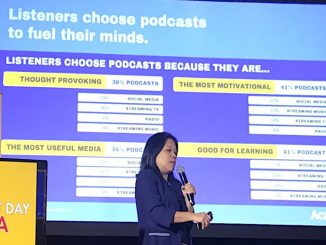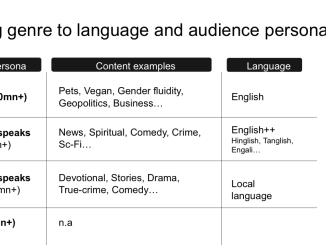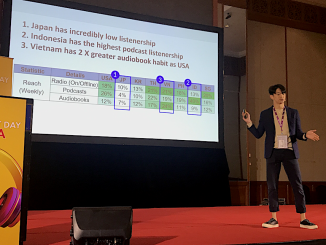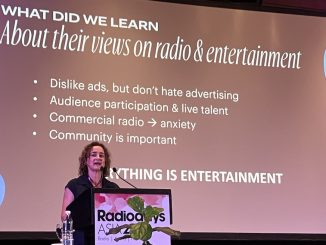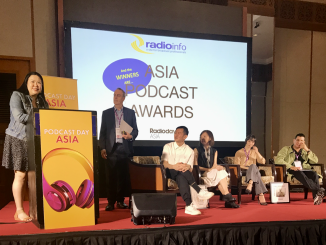
Podcast of the Year Winners speak at Radiodays Asia 2023
The awardees of the first ever Radioinfo Asia Podcast of the Year awards were invited to speak at Radiodays Asia 2023 in Kuala Lumpur.Radioinfo founder Steve Ahern presented the awards in front of an enthusiastic crowd on the second day of the event, dubbed Podcast Day by organizers.The winner of the major podcast award is the Japanese-American true crime podcast The Evaporated, produced by Campside Media and hosted by Shoko Plambeck and Jake Adelstein. The two hosts explore the Japanese phenomenon of jouhatsu – to disappear suddenly, literally evaporate– while also tracking down Adelstein’s missing former accountant.“We really think audio media and journalism share similar struggles with engagement and relevance, and this is just one way we see them evolving together for the future,” said the hosts in their acceptance speech.The indie podcast award winner is SPH Media podcast The Reading Room, a lighthearted, conversational podcast hosted by Tan Yi Li and Chang Cheng Yao. The Singapore-based Mandarin language podcast is described as being “for book lovers who like to delve beyond the book and at the same time enjoy anecdotes of life.” The Reading Room began from a conversation between Tan and Chang and grew into a project that has so far been running for 3 years. It introduces Chinese books from multiple different countries to readers.Tan also presented at the 25 Ideas In 25 Minutes event held in a later session, where she outlined her 5C’s of podcast success: Communicate, Collaborate, Consistency, be Creative and build Community.Also announced during the session were The People’s Choice Winners of the Radioinfo Podcast Asia Awards. The winning podcasts, Land Before Bedtime and Viva la Vida, received the most votes in a staggering pool of about 1,000 respondents.Radiodays Asia was held September 5th and 6th in Kuala Lumpur, Malaysia. The event is a collaboration between broadcasters in the Asia-Pacific and Radiodays Europe, which organizes the world’s largest radio, audio, and podcasting conference.Last year’s in-person event, also held in Kuala Lumpur, saw over 300 attendees from over 30 countries, and it is estimated that even more have come this year due to the reduced COVID-19 travel restrictions.Reporter: Amy Yoshida-Plambeck […]

